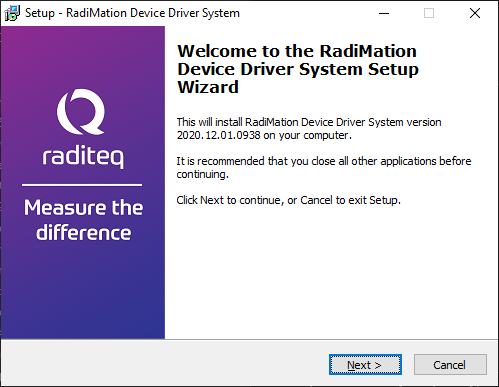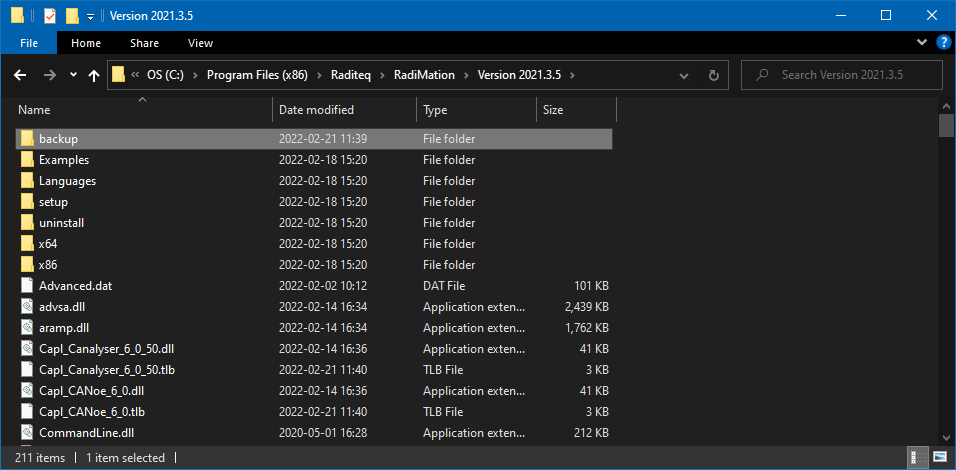RadiMation Application Note 117: Difference between revisions
| Line 15: | Line 15: | ||
The following steps can be used to install the device driver update: | The following steps can be used to install the device driver update: | ||
# Download the [[DRIVERS.EXE]] from the | # Download the [[DRIVERS.EXE]] from the [https://wiki.radimation.com/ RadiMation Wiki website] at https://wiki.radimation.com/ | ||
# Start the downloaded DRIVERS.EXE | # Start the downloaded DRIVERS.EXE | ||
# A welcome page is shown by the installer. The to be installed driver version is shown in a date encode format (YYYY.MM.DD.HHMM). Click on 'Next >' to continue with the installation. <BR /> [[File:DriversExeStartPage.PNG]] | # A welcome page is shown by the installer. The to be installed driver version is shown in a date encode format (YYYY.MM.DD.HHMM). Click on 'Next >' to continue with the installation. <BR /> [[File:DriversExeStartPage.PNG]] | ||
Revision as of 10:54, 21 February 2022
Updating RadiMation device drivers[edit]
RadiMation® uses device drivers to control equipment. Besides a RadiMation release and installation, a separate device driver installation package exists with a different version number. This DRIVERS.EXE is also included by the standard RadiMation installer, but it may be necessary to install a newer version of the DRIVERS.EXE on an already installed RadiMation® version.
You can find and download the latest device drivers on the Device Drivers Download page.
RadiMation device drivers, will be installed to a specific RadiMation version. For each RadiMation <version>, a separate folder is created containing the files for that RadiMation® version. RadiMation drivers are installed as a list of .DLL files that are placed in the RadiMation <version> installation folder. When updated device drivers are installed to a specific RadiMation® version, its overwrites the older device driver files, and the selected RadiMation® version will from then on use the updated device drivers.
Any other RadiMation® version that is installed on the same PC will remain to use drivers that have previously been installed on that specific version. That other RadiMation® version is thus not affected by the device driver update. If the device driver for the other RadiMation® version also should be updated, the same device driver update installation should be performed again for the other RadiMation® version.
Besides the device drivers for RadiMation, the drivers installation also includes and installs Windows USB drivers to control Raditeq USB connected equipment.
RadiMation device driver update installation[edit]
The following steps can be used to install the device driver update:
- Download the DRIVERS.EXE from the RadiMation Wiki website at https://wiki.radimation.com/
- Start the downloaded DRIVERS.EXE
- A welcome page is shown by the installer. The to be installed driver version is shown in a date encode format (YYYY.MM.DD.HHMM). Click on 'Next >' to continue with the installation.
- If multiple installed versions of RadiMation® are detected, a page is shown where the version can be selected to which the drivers should be installed. The latest version is automatically selected. Select the desired version and click on 'Next >'.
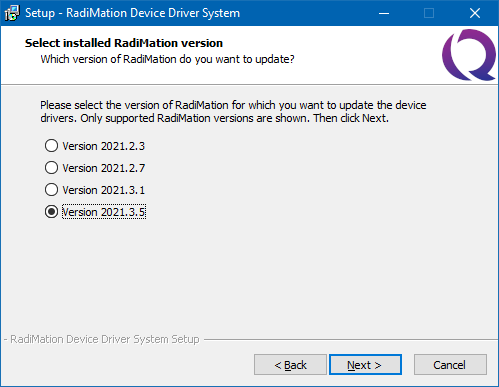
- A page is shown where the components can be selected that should be installed. The installer will already select all the desired components. Components that have not been updated since the previous installation are automatically unselected. Normally there is no need to change the selection, only in specific cases the default selection has to be changed. These listed components are :
- RadiMation Device drivers: The actual device drivers, will always be installed
- Radi-products USB device drivers: The Windows USB drivers (certified by Microsoft) to control USB connected Raditeq equipment
- Microsoft Visual C++ Redistributable Package: A Microsoft library that is used by the RadiMation device drivers.
Click on 'Install'.
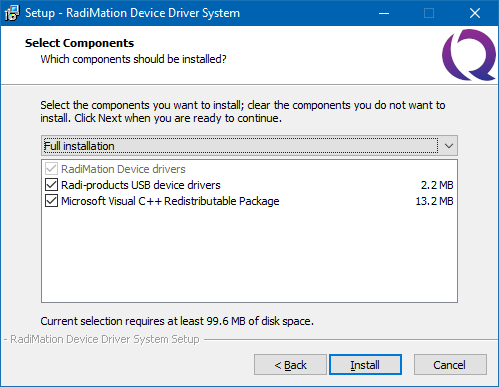
- A page is shown that shows the progress of the installation of the files.
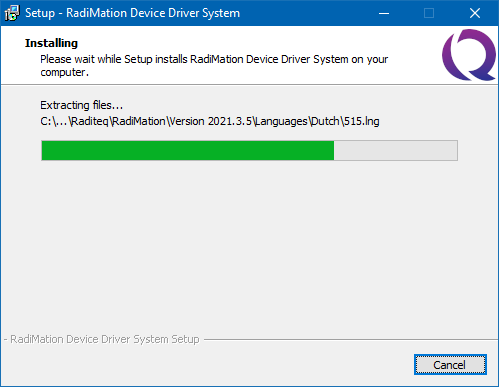
- If the 'Runtime files' component was selected, a window will also be shown that shows the progress of the installation of those files.
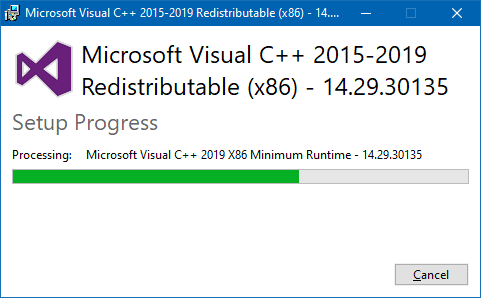
- If a restart of the PC is required this will be shown on the page. Select the 'Yes, restart the computer now' option, and click on 'Next >'
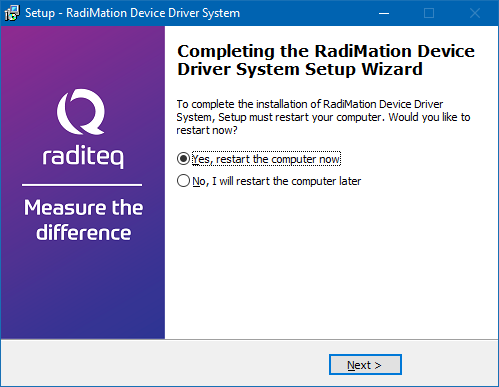
- If no restart of the PC is required, the 'finished' page will be shown. The checkbox 'Run Radimat.exe' can be selected if you directly want to start the RadiMation®. Click on 'Next >'
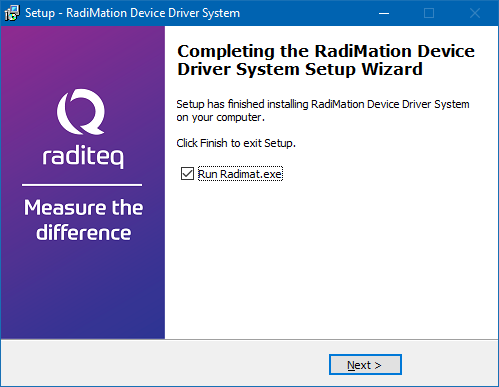
Manual restore of a previous device driver[edit]
During the device driver installation, a backup of the older drivers is made in the "<RadiMation installation <version>>\Backup\<date>\" folder. In case issues occur after updating device drivers, one or more of the device driver .DLL files from the "\Backup\<date>\" folder can be copied and overwritten in the RadiMation installation folder.
| Note: | The RadiMation device drivers are a list of .DLL files. Each .DLL file can contain multiple drivers that are related to each other. Often the same device-types with the same brand are combined in a single .DLL file. Restoring a .DLL file is thus also restoring the previous device driver version of those other devices that are present in the same .DLL file.. |
